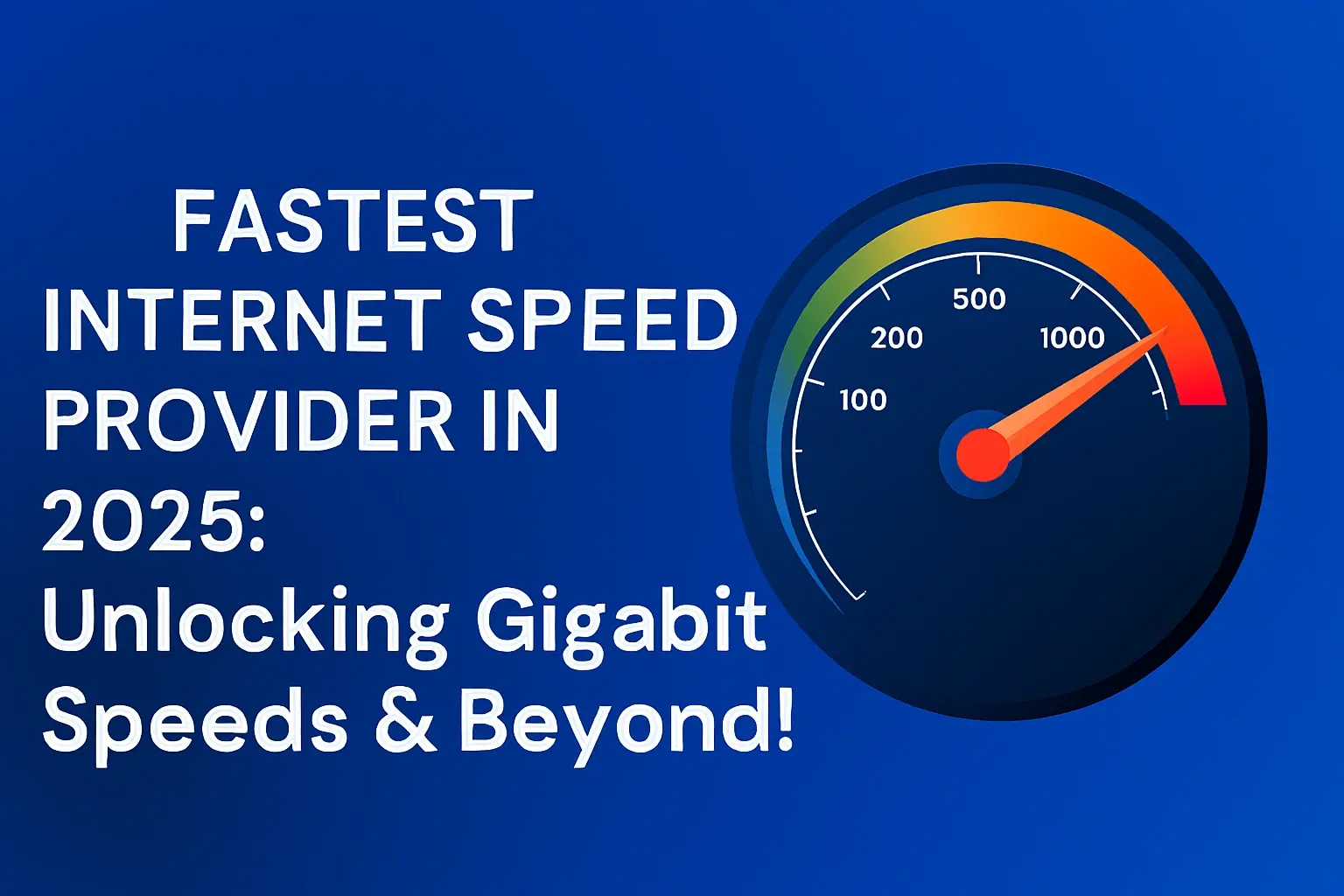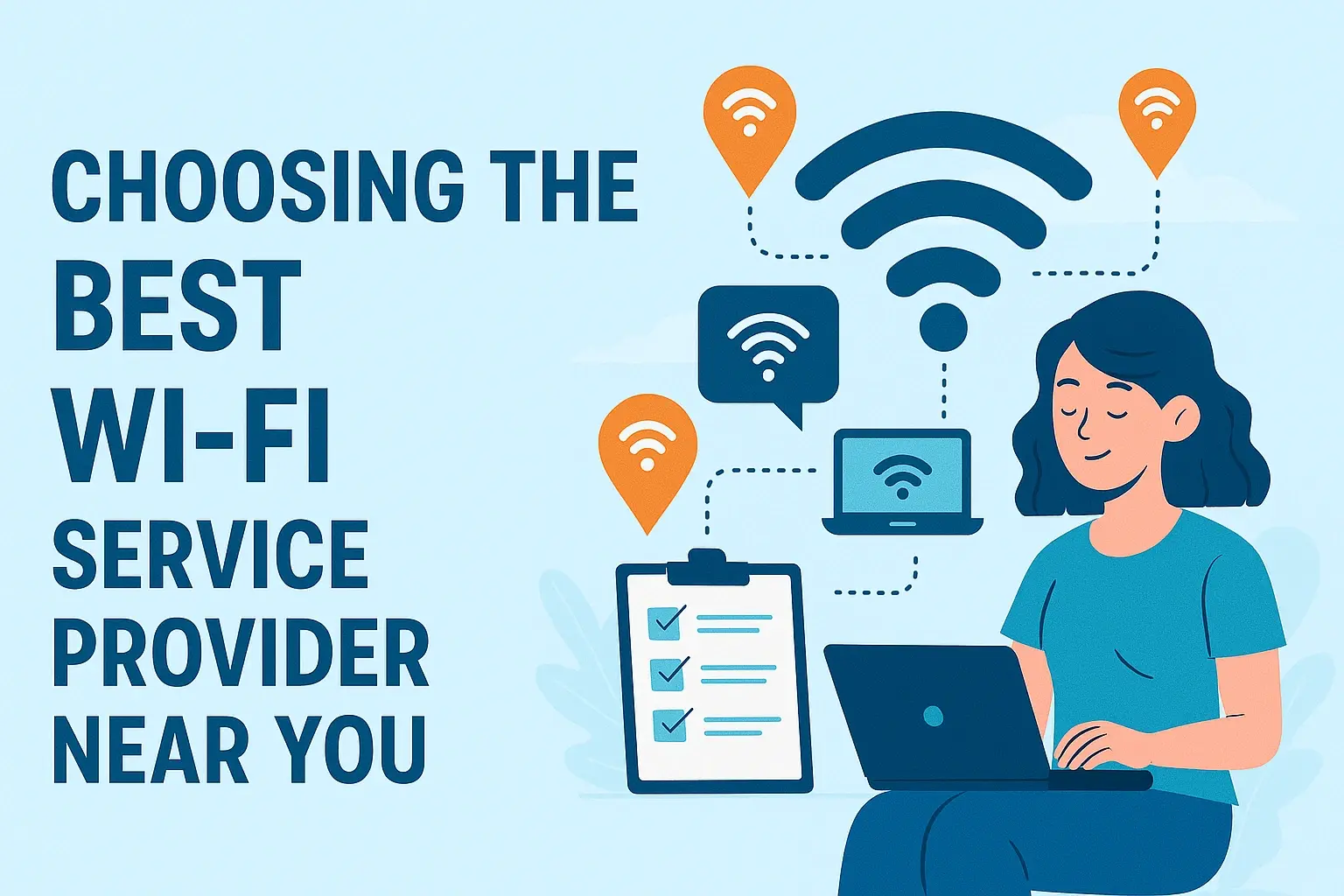Is DSL Internet Good? Understanding the Benefits

Is DSL internet good in 2025? This article explores the enduring benefits of Digital Subscriber Line (DSL) technology. We delve into its reliability, cost-effectiveness, and suitability for specific user needs, comparing it against newer technologies and offering practical advice for maximizing its performance. Understand if DSL remains a viable option for your home or business.
The Enduring Relevance of DSL: Is It Still a Viable Internet Option in 2025?
In the rapidly evolving landscape of internet connectivity, where fiber optics and 5G wireless often steal the spotlight, it's easy to dismiss older technologies. However, Digital Subscriber Line (DSL) internet, a technology that has been a cornerstone of home and business connectivity for decades, continues to hold a surprising amount of relevance in 2025. While it may not always boast the headline-grabbing speeds of its newer counterparts, DSL offers a unique set of advantages that make it a compelling choice for a significant portion of the population. This article aims to provide a comprehensive overview of DSL, dissecting its benefits, understanding its limitations, and ultimately answering the crucial question: Is DSL internet good in 2025?
The perception of DSL has often been overshadowed by the promise of gigabit speeds delivered via fiber. Yet, for many, the immediate need is for a stable, reliable, and affordable internet connection. DSL, leveraging existing telephone lines, often fills this niche. According to recent market analyses for 2025, while fiber optic deployment continues to expand, a substantial percentage of households and small businesses still rely on DSL as their primary internet service. This is particularly true in rural or semi-urban areas where the infrastructure for newer technologies may not yet be fully established or economically viable to deploy. The cost-effectiveness of DSL is a significant driver, making it accessible to a broader demographic.
Furthermore, the inherent reliability of DSL is a factor that cannot be understated. Unlike some wireless solutions that can be susceptible to weather interference or signal congestion, DSL connections are generally more stable, providing a consistent online experience. This stability is crucial for a wide range of activities, from remote work and online education to simply staying connected with loved ones. As we navigate an increasingly digital world, the fundamental need for dependable internet access remains paramount. This article will explore the technical underpinnings of DSL, its current market position, and practical strategies for users to get the most out of their DSL service, providing a balanced perspective on its continued utility.
Understanding the Core Technology: How DSL Works
To truly understand if DSL internet is "good," it's essential to grasp the fundamental technology behind it. Digital Subscriber Line (DSL) is a modem technology that transmits digital data over telephone lines. Unlike dial-up internet, which used a voice channel and tied up the phone line, DSL utilizes a wider range of frequencies on the same copper wires used for traditional voice calls. This allows for simultaneous voice and data transmission, a significant improvement over earlier internet technologies.
The Role of Copper Lines
The backbone of DSL technology is the existing copper telephone network. This vast infrastructure, laid out over decades, provides a ready-made pathway for data transmission. DSL modems at both the user's premises and the telephone company's central office (or a local exchange) modulate and demodulate digital signals, converting them into analog signals suitable for transmission over the copper wires, and vice versa. This reliance on existing infrastructure is a key reason for DSL's widespread availability and relative affordability.
Asymmetrical Speeds: ADSL and SDSL
The most common form of DSL is Asymmetrical DSL (ADSL). The "asymmetrical" aspect refers to the fact that download speeds are typically much faster than upload speeds. This configuration is ideal for most residential users who primarily consume content (downloading web pages, streaming videos, downloading files) rather than uploading large amounts of data. For instance, a typical ADSL plan might offer download speeds of up to 25 Mbps and upload speeds of up to 3 Mbps.
For businesses or users with significant upload needs (e.g., hosting servers, frequent large file uploads, video conferencing with high-quality streams), Symmetric DSL (SDSL) is available. As the name suggests, SDSL offers equal upload and download speeds, though it is generally more expensive and less common than ADSL. Variations like VDSL (Very-high-bit-rate DSL) and G.fast offer higher speeds but typically require closer proximity to the central office or the use of fiber optic cable for part of the connection.
Distance Limitations and Performance Factors
A critical factor influencing DSL performance is the distance between the user's premises and the telephone company's central office or local exchange. The further away a user is, the weaker the signal becomes, leading to slower speeds and potentially less reliable connections. This is a fundamental limitation of DSL technology. For users located very close to the exchange, higher speeds are achievable, often categorized as "near DSL" or utilizing technologies like VDSL.
Other factors affecting DSL performance include the quality of the copper wiring, the presence of interference from other electrical devices, and the overall network congestion at the provider's end. Understanding these technical aspects helps to set realistic expectations about DSL speeds and reliability in different locations.
DSL in 2025: Market Trends and Availability
As of 2025, the internet service provider (ISP) market is dynamic, with significant investment in fiber optic networks and the continued expansion of 5G home internet. Despite these advancements, DSL is far from obsolete. Its continued presence is largely driven by its established infrastructure and its ability to serve areas where deploying newer technologies is economically challenging.
Geographic Availability and Market Share
DSL remains a primary internet option for a significant portion of households, particularly in suburban and rural areas across North America and Europe. While urban centers are increasingly dominated by fiber and high-speed cable, DSL providers continue to offer services where these alternatives are limited or unavailable. Market research from early 2025 indicates that DSL still holds a substantial market share, especially among budget-conscious consumers and in regions with less dense population. For example, reports suggest that in some countries, over 30% of broadband connections still utilize DSL technology, though this percentage is gradually declining as fiber deployment accelerates.
Speed Tiers and Evolving Capabilities
The speeds offered by DSL have evolved. While older ADSL plans might have topped out at 10-15 Mbps, modern DSL services, particularly those utilizing VDSL technology and vectoring (a technique to reduce crosstalk interference between lines), can offer speeds significantly higher. In 2025, it's not uncommon to find DSL plans offering download speeds of up to 100 Mbps, and in some limited cases, even higher, especially for users located close to upgraded network facilities. However, it's crucial to note that these higher speeds are not universally available and are heavily dependent on the infrastructure in a specific location and the distance to the exchange.
Pricing and Competitive Landscape
One of DSL's enduring strengths is its competitive pricing. In 2025, DSL plans often represent the most affordable entry point into broadband internet. Providers can maintain lower prices due to the reduced infrastructure costs compared to laying new fiber optic cables. This makes DSL an attractive option for individuals and families on a budget, students, or those whose internet usage is relatively light. The competitive landscape means that consumers can often find good deals, especially when bundling DSL with phone services, a common practice among traditional telecommunication companies.
However, it's important to be aware of potential data caps or throttling that some DSL providers might implement, especially on lower-tier plans. While many plans now offer unlimited data, it's always wise to check the terms and conditions. The trend in 2025 is towards more unlimited data plans across all technologies, but vigilance is still recommended.
Maximizing Your DSL Experience: A Practical Guide
Even with a technology that has inherent limitations, there are several practical steps users can take to optimize their DSL internet experience. By understanding how DSL works and implementing these strategies, you can ensure you're getting the best possible performance from your connection.
1. Optimize Your Modem Placement and Setup
The DSL modem is the gateway to your internet. Ensure it's placed in a central location in your home, away from obstructions and sources of interference like microwaves, cordless phones, and large metal objects. Avoid placing it in enclosed cabinets or behind furniture, as this can hinder Wi-Fi signal distribution. If you're using a combined modem/router unit, ensure its firmware is up-to-date, as updates often include performance improvements and security patches.
2. Use Quality Ethernet Cables
While Wi-Fi is convenient, a wired Ethernet connection is almost always faster and more stable. For devices that are stationary and require the best performance (e.g., desktop computers, gaming consoles, smart TVs), connect them directly to the router using a good quality Ethernet cable (Cat 5e or Cat 6 is recommended). This bypasses potential Wi-Fi interference and ensures you're receiving the maximum speed your modem can provide.
3. Manage Your Wi-Fi Network
If you rely on Wi-Fi, ensure your router is configured optimally. Change the default Wi-Fi password for security and consider using the 5GHz band if your devices support it, as it offers faster speeds and less interference than the 2.4GHz band, though it has a shorter range. If you have a larger home or experience Wi-Fi dead spots, consider using a Wi-Fi extender or a mesh Wi-Fi system. These devices can help boost and extend your wireless signal, providing better coverage throughout your home.
4. Understand Your Plan's Speeds and Usage
Regularly test your internet speed using online speed test tools. Compare the results to the advertised speeds of your DSL plan. If you consistently get speeds much lower than expected, especially if you are close to the exchange, it might be worth contacting your ISP. Also, be mindful of your data usage, especially if your plan has data caps. Streaming high-definition video, online gaming, and large file downloads can consume significant data.
5. Minimize Network Congestion
If multiple devices are using the internet simultaneously for bandwidth-intensive activities, it can slow down the connection for everyone. Prioritize essential activities or schedule large downloads for times when the network is less busy. Some routers offer Quality of Service (QoS) settings that allow you to prioritize traffic for specific devices or applications, ensuring that critical tasks like video calls get the bandwidth they need.
6. Maintain Your Phone Line
Since DSL uses existing phone lines, the condition of these lines is crucial. Ensure there are no damages or faulty connections. Using a microfilter (or splitter) correctly is essential to separate the DSL signal from the voice signal, preventing interference. Each device that connects to a phone jack (phone, fax machine, DSL modem) should have its own microfilter, or the modem should be connected directly to the main phone jack without a filter if it's the only device.
DSL vs. The Competition: A 2025 Comparison
To fully assess the value of DSL in 2025, it's important to compare it against other prevalent internet technologies. Each has its own strengths and weaknesses, making the "best" choice highly dependent on individual needs and location.
| Feature | DSL | Fiber Optic | Cable Internet | 5G Home Internet |
|---|---|---|---|---|
| Availability (2025) | Widespread, especially in suburban/rural areas. | Growing rapidly in urban/suburban areas, limited elsewhere. | Common in most urban/suburban areas, less so in rural. | Expanding quickly in urban/suburban areas with strong 5G coverage. |
| Typical Speeds (Download) | 10 Mbps - 100 Mbps (Varies greatly with distance) | 100 Mbps - 10 Gbps (Symmetrical speeds common) | 50 Mbps - 1 Gbps (Asymmetrical, shared bandwidth) | 100 Mbps - 1 Gbps (Can fluctuate) |
| Typical Speeds (Upload) | 1 Mbps - 10 Mbps (Significantly lower than download) | 100 Mbps - 10 Gbps (Often same as download) | 5 Mbps - 50 Mbps (Lower than download) | Varies, often lower than download |
| Reliability | Generally stable, less prone to external interference. Speed degrades with distance. | Highly reliable, consistent speeds, less affected by distance or congestion. | Reliable, but speeds can fluctuate due to shared bandwidth during peak hours. | Can fluctuate based on signal strength, network congestion, and weather. |
| Cost | Most affordable entry point. | Often the most expensive, especially for higher tiers. | Mid-range pricing, often competitive with DSL for higher speeds. | Competitive, often with unlimited data. |
| Best For | Budget-conscious users, light internet use, areas with limited options. | Heavy users, businesses, gamers, streaming enthusiasts, future-proofing. | General home use, streaming, moderate gaming, areas where fiber isn't available. | Users in areas with strong 5G, seeking an alternative to wired, potential for mobility. |
DSL vs. Fiber Optic
Fiber optic internet is the gold standard for speed and reliability. It uses light signals transmitted through glass or plastic fibers, offering significantly higher bandwidth, symmetrical upload/download speeds, and immunity to electromagnetic interference. However, fiber deployment is costly and time-consuming, meaning it's not available everywhere. DSL's advantage here is its existing infrastructure and lower cost, making it accessible to more people, albeit at lower speeds.
DSL vs. Cable Internet
Cable internet, like DSL, uses existing infrastructure (coaxial cables originally for TV). It generally offers higher speeds than DSL but is a shared medium, meaning performance can degrade during peak usage times when many neighbors are online. DSL, while often slower, can be more consistent in its performance, especially if you are close to the exchange. Cable is typically more widely available than fiber but less so than DSL in very rural areas.
DSL vs. 5G Home Internet
5G home internet offers a wireless alternative with potentially high speeds. It's a good option for those who want to avoid wired installations or have limited wired options. However, its performance is highly dependent on signal strength, proximity to 5G towers, and network congestion. DSL, being a wired connection, generally offers more predictable and stable performance, especially in areas where 5G signals might be weak or inconsistent.
Best Practices for Optimizing DSL Performance
To ensure your DSL connection serves you well in 2025, adhering to best practices is crucial. These tips focus on maximizing the efficiency and stability of your existing service.
- Regularly Restart Your Modem/Router: Just like any electronic device, modems and routers can benefit from a periodic reboot. This can clear temporary glitches and improve performance. Aim to do this weekly or bi-weekly. A simple power cycle can resolve many minor connectivity issues.
- Keep Firmware Updated: Ensure your modem and router have the latest firmware installed. Manufacturers release updates to improve performance, security, and compatibility. Check your device's settings or your ISP's website for instructions on how to update. Outdated firmware can be a bottleneck for speed and a security risk.
- Use Microfilters Correctly: For ADSL, microfilters (or splitters) are essential to prevent interference between your phone and internet signals. Ensure every phone, fax machine, or other analog device connected to a phone jack has a microfilter. The DSL modem should connect directly to the main wall jack or a filtered jack. Incorrect filtering is a common cause of slow DSL speeds.
- Minimize Wi-Fi Interference: If you primarily use Wi-Fi, be aware of common sources of interference. Keep your router away from microwaves, cordless phones, Bluetooth devices, and large metal objects. If possible, use the 5GHz Wi-Fi band for devices that support it, as it's less prone to interference than the 2.4GHz band. A clean Wi-Fi environment is key for stable wireless speeds.
- Prioritize Wired Connections for Critical Devices: For devices that require the most stable and fastest connection (e.g., gaming consoles, desktop PCs for work, streaming devices), use an Ethernet cable whenever possible. This bypasses Wi-Fi limitations and ensures you receive the maximum speed your DSL plan offers. Wired connections offer superior reliability and speed.
- Monitor Network Usage: Be aware of how much bandwidth your household is consuming. If you have a data cap, monitor your usage to avoid overages. Even without caps, understanding usage patterns can help identify bandwidth hogs and optimize your network for essential activities. Conscious usage management prevents unexpected slowdowns.
- Test Your Speeds Regularly: Use reputable online speed test tools to check your download and upload speeds periodically. Compare these results to your subscribed plan. If speeds are consistently much lower than expected, and you've implemented other optimizations, it might be time to contact your ISP. Regular speed tests are your diagnostic tool.
Advanced Strategies for Enhancing Your DSL Connection
For users looking to push the boundaries of their DSL service or overcome specific challenges, several advanced strategies can be employed. These methods require a bit more technical know-how but can yield significant improvements.
1. Upgrade Your Modem/Router
While ISPs often provide modems, investing in a high-quality, third-party modem and router can make a difference. Look for modems that support the latest DSL standards (like VDSL2 or G.fast if available in your area) and routers with advanced Wi-Fi capabilities (e.g., Wi-Fi 6). Ensure compatibility with your ISP's network before purchasing. A more powerful router can offer better signal strength, range, and more advanced features like VPN support or robust QoS settings.
2. Implement a Mesh Wi-Fi System
For larger homes or those with complex layouts, a single router might struggle to provide adequate Wi-Fi coverage. A mesh Wi-Fi system consists of a main router and one or more satellite nodes that work together to create a single, seamless Wi-Fi network. This can significantly improve Wi-Fi performance and eliminate dead zones throughout your home, ensuring a more consistent experience even if your underlying DSL speed is moderate.
3. Utilize Quality of Service (QoS) Settings
Many advanced routers offer Quality of Service (QoS) settings. QoS allows you to prioritize certain types of network traffic or specific devices over others. For example, you can configure your router to give higher priority to video conferencing or online gaming traffic, ensuring these applications receive consistent bandwidth even when other devices are heavily utilizing the network. This is particularly useful on slower DSL connections where bandwidth is at a premium.
4. Consider a Dedicated DSL Line for Business
For small businesses that rely heavily on internet connectivity but cannot access fiber, a dedicated SDSL line might be a worthwhile investment. While more expensive than ADSL, the symmetrical speeds can significantly improve the performance of business-critical applications like VoIP, video conferencing, and cloud-based services that require consistent upload bandwidth.
5. Investigate ISP-Specific Optimizations
Some ISPs offer advanced DSL plans or services that leverage technologies like vectoring or bonding to achieve higher speeds. Research what your current ISP offers, or consider switching to an ISP that provides superior DSL technology in your area. Understanding the specific DSL technology being deployed by your provider (e.g., ADSL2+, VDSL2, G.fast) can help you choose the right plan and equipment.
Who Benefits Most from DSL in 2025?
Given its characteristics, DSL in 2025 is not a one-size-fits-all solution. However, it remains an excellent choice for specific user profiles:
- Budget-Conscious Individuals and Families: For those who need reliable internet access for basic tasks like email, web browsing, social media, and standard-definition streaming, DSL offers the most affordable entry point into broadband. It provides essential connectivity without breaking the bank.
- Residents in Rural or Underserved Areas: Where fiber optic and high-speed cable infrastructure is not available or prohibitively expensive to deploy, DSL often remains the only viable high-speed internet option. Its reliance on existing phone lines makes it more accessible in these regions. DSL bridges the digital divide in many communities.
- Light Internet Users: If your household primarily uses the internet for occasional browsing, email, and perhaps streaming standard-definition content, the speeds offered by DSL are likely sufficient. You don't need gigabit speeds for these activities. Meeting basic needs without overspending on speed.
- Users Prioritizing Stability Over Peak Speed: For some, a consistently stable connection is more important than the absolute fastest speeds. DSL can offer a more predictable performance than shared cable networks, especially if you are located close to the exchange. Reliability is a key strength for DSL.
- Small Businesses with Basic Needs: Small businesses that don't require high-bandwidth applications, extensive cloud operations, or high-volume data transfers might find DSL perfectly adequate and cost-effective. A cost-effective solution for essential business operations.
Conclusion: Is DSL Internet Good for You in 2025?
In 2025, the question of whether DSL internet is "good" is nuanced. It's not the fastest technology available, nor is it the most cutting-edge. However, for a significant segment of the population, DSL remains a highly relevant and beneficial internet service. Its primary strengths lie in its widespread availability, cost-effectiveness, and general reliability. In areas where fiber optics or high-speed cable are absent or prohibitively expensive, DSL provides essential broadband access, bridging the digital divide and keeping communities connected.
The modern DSL offerings in 2025, especially those utilizing VDSL technology, can deliver speeds that are perfectly adequate for everyday internet tasks such as browsing, email, social media, and standard-definition streaming. For budget-conscious households, students, or individuals with lighter internet needs, DSL represents a sens





